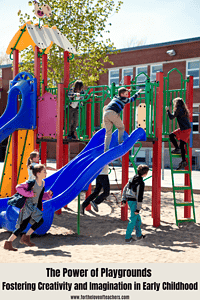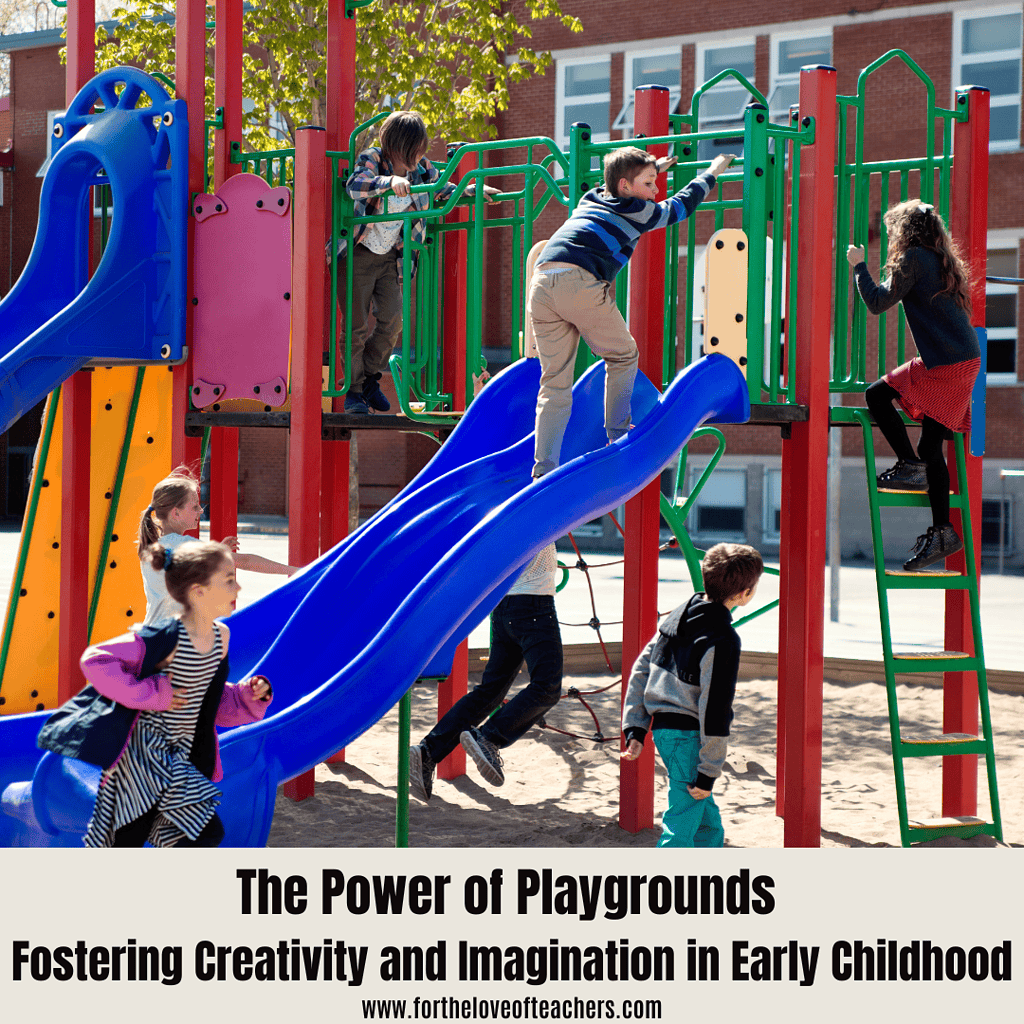“Play builds the kind of free-and-easy, try-it-out, do-it-yourself character that our future needs.” — James Hines Jr.
Think of childhood creativity and your mind may conjure images of kids drawing, painting, or shaping putty into pretty sculptures. Yet a big part of a child’s creativity and imagination are shaped outdoors when they are doing one of the things that comes most naturally to them: playing. Playgrounds, both traditional and natural, allow kids to explore, test, and expand their knowledge and physical skills. Study after study has shown that learning through play can fulfill the physical, intellectual, social, and emotional needs of children. What’s more, they present kids with a host of opportunities for solving problems, taking part in fantasy play, and interacting with others.
Honing the Imagination
Playgrounds typically comprise a host of structures that boost a child’s imagination. From slides attached to playhouses to vine climbers, noodle climbers, and spring riders, these features enable children to imagine they are driving a car or motorbike, climbing up vines, or playing in their home. They make it easy for kids to take part in role-plays alongside new friends, while also improving their balance, strength, and flexibility. Within and atop these structures, kids can pretend they are homemakers, pirates, astronauts, or farmers. The outdoor landscaping can help add a sense of adventure to dramatic or fantasy play.
The Power of Taking Risks
Playgrounds involve a sound sense of risk-taking. The kind that helps kids grow, flourish, and become more confident. As children in the early stages grow, they begin to embrace increasingly difficult challenges, including jumping from higher surfaces, climbing to higher levels of a play structure, and swinging with greater velocity. All these activities involve risk. Studies have shown that there is a powerful link between risk-taking and creativity. Being able to risk failures is vital for kids to feel confident enough to share ideas, make proposals, and be themselves, even when there is a chance that others will judge them.
Outdoor Classes
Because outdoor environments and playgrounds can hone so many skills at once, many schools are offering kids an outdoor education. Renowned schools that embrace nature as part of their learning include Montessori schools, where kids often play in outdoor settings (including playgrounds) to enhance their cognitive skills muscle coordination, balance, confidence, and creativity. Many homeschooled kids also benefit far from outdoor playground settings than kids in traditional schools, where time on the playground is usually limited to short morning or lunch breaks.
Playgrounds and the Theory of Loose Parts
Outdoor playgrounds, particularly nature-based ones, often have a deliberate inclusion of loose parts such as rocks, sticks, branches, and logs. The use of loose parts can be traced back to Danish architect, Carl Theodor Sørensen, who began the junk playground and loose parts movement after the Great Depression and World War II, when the metal required to make equipment grew scarce. Sorensen’s idea was that when kids are allowed to play with loose items under the supervision of their guardians, their creativity and imagination benefit. Research has found that children’s gross and fine motor skills are developed or enhanced when interacting with small and large loose parts. Their hand-eye coordination improves, as does their muscle control. Children’s cognitive development and creativity are boosted as they learn to problem-solve, communicate, and learn math, science, language, art, and music skills. If you’ve seen children playing in outdoor playgrounds, you may have noticed them engaging in constructive play, making cars from boxes or forts from sticks and logs. As they play, they cooperate with others, explore different possibilities, and rely on their creativity.
Conclusion
Playgrounds are a marvelous place to hone a child’s imagination and creativity. Playgrounds invite kids to be outdoors, where they can take risks, push their limits, and put a host of skills (including problem-solving) to the test. Whether nature-based or constructed, playgrounds play a vital role in a child’s education, while also providing them with some of the most joyful moments in their day.
Related post: How Playgrounds Can Boost Social-Emotional Development in Children
About the Author: Meet Nina S., a freelance writer who’s all about bringing her research and stories to life. With a talent for crafting compelling content, Nina knows how to make ideas shine on the page. When not busy at the keyboard, you’ll find her at local coffee shops enjoying a good cup of joe or going for long hikes.
Thanks for reading!
If you like it, then pin it!

Christine Weis is a passionate educator, classroom management coach, wife, and mom of two busy boys. She enjoys teaching, writing, and creating resources for teachers.






Leave a Reply